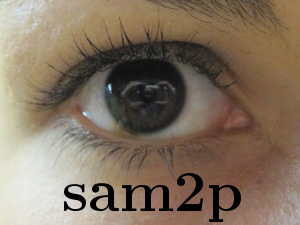 sam2p is a UNIX command line utility written in ANSI C++ that converts many raster (bitmap) image formats into Adobe PostScript or PDF files and several other formats.
sam2p is a UNIX command line utility written in ANSI C++ that converts many raster (bitmap) image formats into Adobe PostScript or PDF files and several other formats. The images are not vectorized. sam2p gives full control to the user to specify standards-compliance, compression, and bit depths. In some cases sam2p can compress an image 100 times smaller than the PostScript output of many other common image converters. sam2p provides ZIP, RLE and LZW (de)compression filters even on Level1 devices.
The author of sam2p recommends his program over other image image converts because of the following reasons:
- sam2p produces much smaller output
- sam2p supports the mainstream image formats of today without compromise. sam2p has many file format fine-tuning features that are missing from most other converter utilities. For example: TIFF ZIP compression, TIFF LZW compression, TIFF JPEG compression, transparent PNG files, BMP RLE-4 and RLE-8 compression etc.
- sam2p supports all levels (versions) of the PostScript language, and output images have the smallest file size allowed by the LanguageLevel.
- output images of sam2p are real-world compatible, i.e the author has tested them with many common image processing programs, for example: Ghostscript, pdfTeX, xpdf, Acrobat Reader, The GIMP, ImageMagick, xv, Acrobat Distiller, QuarkXPress, InDesign. The author has also tested PostScript files on HP and OkiData printers.
- sam2p uses only a minimal number of libraries. You don't have to install 33Mb of ballast software to use sam2p. Image libraries (libtiff etc.) are _not_ used, the math library is not used, libstdc++ is not used, zlib is not used.
The author of sam2p recommends his program over ImageMagick:
- sam2p produces much smaller output. A speed increase of a factor of 100 (10000%) in file size can be achieved in extreme circumstances.
- sam2p gives the user complete control over the data layout of the output image, including Compression, SampleFormat and TransferEncoding. ImageMagick provides only a single -compress option, which is often ignored or not used at full capability provided by the file format.
- sam2p is fast, often 10 times faster than ImageMagick
- sam2p doesn't depend on external libraries. You don't have to waste effort for installing zillions of libraries (with versions possibly incompatible with your libc or system) just to convert a GIF file to EPS. You don't have to install 33Mb of ballast software to use sam2p. Image libraries (libtiff etc.) are _not_ used, the math library is not used, libstdc++ is not used, zlib is not used. As a contrast, ImageMagick needs liblcms, libtiff, libfreetype, libjpeg, libpng, libwmflite, X11, libbz2, libxml2, zlib and libpthread.
- sam2p supports the mainstream image formats of today without compromise. sam2p has many file format fine-tuning features that are missing from most other converter utilities. For example: TIFF ZIP compression, TIFF LZW compression, TIFF JPEG compression, transparent PNG files, BMP RLE-4 and RLE-8 compression etc. ImageMagick lacks much of these capabilities. However, sam2p cannot do visible transformations on the image -- use ImageMagick to these transformations, and convert its output with sam2p.
- sam2p can create EPS and PDF images with transparency, ImageMagick cannot.
- sam2p supports all levels (versions) of the PostScript language, and output images have the smallest file size allowed by the LanguageLevel. ImageMagick creates incompliant, incompatible and very large EPS files.
- PostScript ZIP, RLE and LZW compression is provided for _all_ LanguageLevels (!), even for PSL1 appeared in 1985. You can print your ZIP-compressed images onto your ancient printer of the 1980s. ImageMagick provides compression only for PSL2 and PSL3.
- sam2p supports all versions of PDF, and output images have the smallest file size allowed by the version. ImageMagick cannot even create PDF files.
- output images of sam2p are always compliant to the standard selected by the user. ImageMagick sometimes puts the Adobes DSC comments wrong, so the output EPS file is not suitable for embedding.
- output images of sam2p are real-world compatible, i.e the author has tested them with many common image processing programs, for example: Ghostscript, pdfTeX, xpdf, Acrobat Reader, The GIMP, ImageMagick, xv, Acrobat Distiller, QuarkXPress, InDesign. The author has also tested PostScript files on HP and OkiData printers. The subjective opinion of the author is that images created by sam2p are generally more compatible than those created by ImageMagick.
- sam2p converts every pixel faithfully, preserving all the 24 RGB bits intact. There is no quality or information loss unless you ask for it. ImageMagick sometimes downsamples a 24 bit image to a 256-color palette, without displaying any warnings.
Long-term limitations:
only DeviceRGB color space, with the Indexed, Gray and RGB image types
Indexed images can have 0..256 colors
alpha channel and transparency supported only for Indexed images: only one color may be transparent
Download.
Sam2p on Google Code.
If you liked this article, subscribe to the feed by clicking the image below to keep informed about new contents of the blog:










0 comments:
Post a Comment